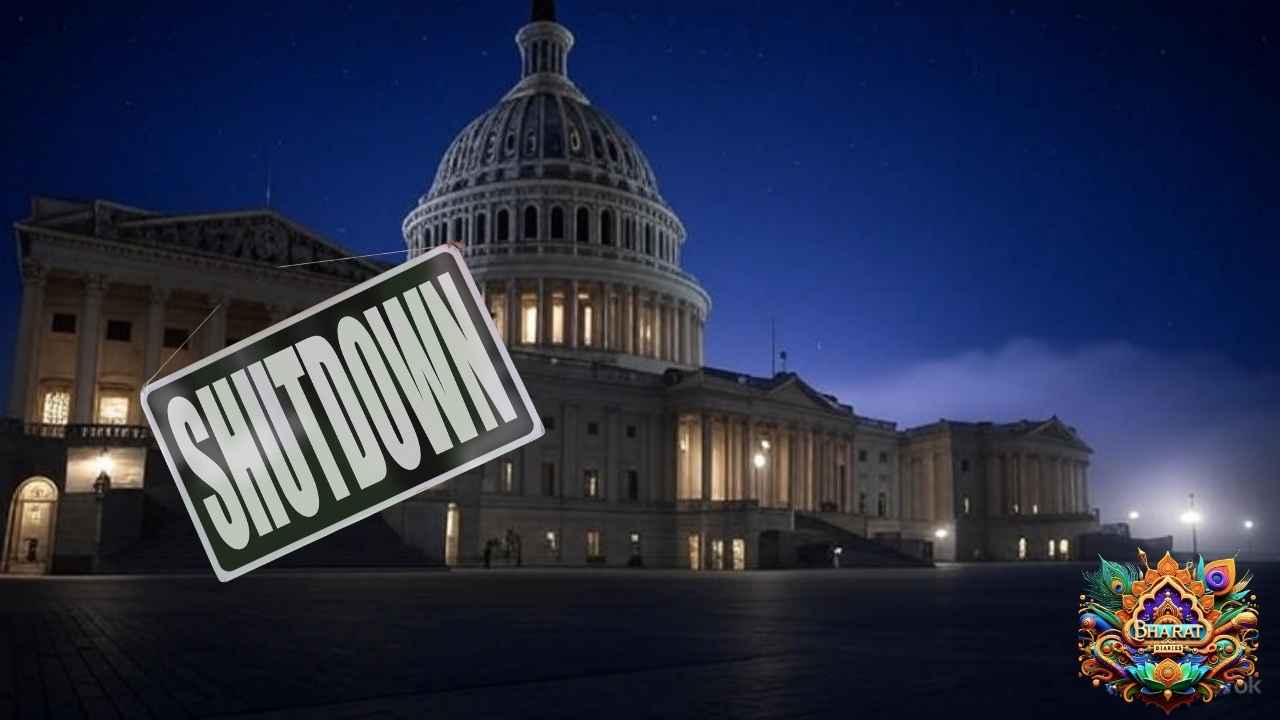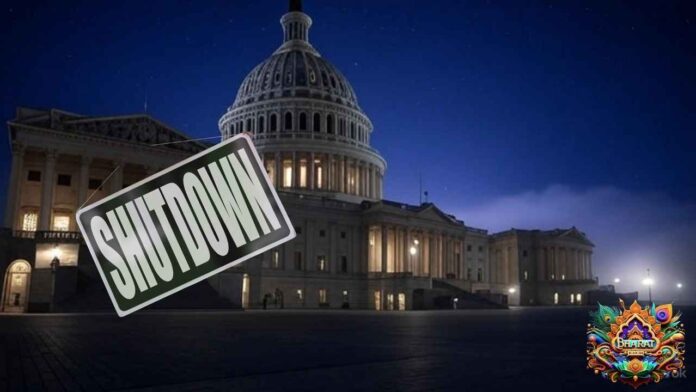
As the USA shutdown drags on, White House layoffs affect thousands of federal workers amid budget impasse. Dive into impacts, politics, and what’s next.
Table of Contents
Hey there, have you been following the chaos in Washington? The USA shutdown is making headlines everywhere, and it’s not just talk anymore—it’s hitting real people hard. We’re talking about the government shutdown that kicked off on October 1, 2025, and now, as it nears its third week, the White House has started laying off federal workers. This move is aimed at pressuring Democrats to cut a deal on the budget. Thousands of employees across agencies are getting pink slips, and it’s raising big questions about essential services like air traffic control and food assistance.
In this post, we’ll break it all down in simple terms. You’ll learn what sparked this USA shutdown, why layoffs are happening now, who’s affected, and what it means for everyday Americans. We’ll look at the politics behind it, share some stats from past shutdowns for context, and even toss in tips on how this could play out. Stick around—whether you’re a federal worker worried about your paycheck or just curious about US politics, we’ve got the details to keep you in the loop. By the end, you’ll have a clear picture of this budget impasse and why it’s such a big deal.
https://bharatdiaries.com/shutdown-in-america-what-it-means-for-everyone/
What Sparked the USA Shutdown?
Let’s start at the beginning. The USA shutdown began on October 1, 2025, when Congress couldn’t agree on a funding bill. It’s like when your family argues over the dinner bill—except this one shuts down parts of the government. Republicans and Democrats are locked in a standoff over spending priorities, with the Trump administration pushing for cuts in certain areas.
This isn’t the first time. Shutdowns happen when lawmakers miss the deadline to pass appropriations bills. In this case, the dispute centers on border security, military funding, and domestic programs. The White House blames Democrats for holding things up, while Dems say the GOP is playing hardball.
According to reports, the shutdown entered its 11th day on October 11, 2025, with no quick end in sight. That’s over a week and a half of federal workers going without pay, parks closing, and delays in services.
Why does this matter? Shutdowns cost the economy billions. The 2018-2019 one, the longest ever at 35 days, led to $11 billion in losses, per the Congressional Budget Office. This time, with layoffs added in, it could get worse.
The White House’s Layoff Announcement: What We Know
Now, onto the big news: federal worker layoffs. On October 10, 2025, the White House started sending out reduction-in-force (RIF) notices. These aren’t just furloughs—temporary unpaid leave—they’re permanent cuts.
White House budget chief Russell Vought announced it, saying “the RIFs have begun.” The goal? To slim down the federal workforce and save money, while ramping up pressure on Democrats to negotiate.
About 4,200 workers are affected so far, across at least seven agencies. That’s a lot of families facing uncertainty. The administration previewed this tactic before the shutdown, telling agencies to prep RIF plans.
Labor unions are fighting back, suing to stop the layoffs, calling them illegal during a shutdown. But the White House says it’s within their rights.
This is part of a bigger push by the Trump team to downsize government. Earlier this year, they targeted “non-essential” roles through DOGE initiatives.
Who’s Getting Hit by These Federal Layoffs?
Not everyone in the federal government is affected the same way. Essential workers—like air traffic controllers, border agents, and military personnel—keep working, but many might miss paychecks.
The layoffs target specific programs. Here’s a quick breakdown:
- Affected Agencies: At least seven Cabinet-level ones, including those handling education, housing, and environmental protection.
- Number of Layoffs: Around 4,200 so far, but it could grow if the shutdown drags on.
- Types of Workers: Mostly in administrative and support roles deemed non-priority by the administration.
For example, think of a park ranger at a national site. During a shutdown, they’re furloughed. Now, with RIFs, their job might vanish for good.
One relatable story: In the 2013 shutdown, a federal employee in Virginia had to dip into savings for groceries. Today, with inflation higher, it’s even tougher.
Impacts on Federal Workers and Their Families
Imagine checking your email and seeing a layoff notice. That’s the reality for thousands right now. Federal workers are real people—teachers, scientists, admins—who keep the country running.
Short-term: No paychecks. The average federal salary is about $90,000 a year, per the Office of Personnel Management. Missing even one check hurts.
Long-term: Job loss means hunting for new work in a tough market. Plus, benefits like health insurance could lapse.
Families feel it too. Kids might skip activities, bills pile up. One case study from the 2018 shutdown: A Coast Guard family relied on food banks. Similar stories are popping up now on social media.
Bullet points on coping tips for affected workers:
- Apply for unemployment benefits right away.
- Reach out to unions for legal help.
- Use community resources like food pantries.
- Check for back pay laws—though the White House is floating no back pay for some.
It’s rough, but many bounce back. Still, this adds stress to an already tense US politics scene.
How the USA Shutdown Affects Essential Services
The shutdown isn’t just about workers—it’s about services we all rely on. Some keep going, but others grind to a halt.
Essential ones protected:
- Social Security payments.
- Medicare and veterans’ benefits.
- Military operations and law enforcement.
But non-essentials? National parks close, IRS audits pause, and FDA inspections slow. This time, with layoffs, it could delay things longer.
For instance, SNAP food assistance might run out for millions if it hits a month. That’s kids going hungry—scary stuff.
Stats show the ripple effect: During the 2018 shutdown, air travel delays spiked 10% due to short-staffed TSA.
If you’re planning a trip, check flights. Or if you need a passport, expect waits.
The Politics Behind the Budget Impasse
US politics at its finest—or worst. The budget impasse boils down to priorities. Republicans want spending cuts and border wall funding. Democrats push for more on healthcare and education.
President Trump has used shutdowns before as leverage. This one feels similar, with layoffs as a new twist to force a deal.
Reactions? Democrats call it cruel. Republicans say it’s needed to trim fat.
Public opinion: Polls from past shutdowns show blame often splits, but workers suffer most.
External link: For more on historical context, check Wikipedia’s page on the 2025 shutdown.
Internal link suggestion: Read our related article on “How US Politics Shapes Your Wallet.”
Comparison: This USA Shutdown vs. Past Ones
How does this stack up? Let’s compare in a table.
| Aspect | 2025 Shutdown (Ongoing) | 2018-2019 Shutdown (35 Days) | 2013 Shutdown (16 Days) |
|---|---|---|---|
| Duration So Far | 11 days | 35 days | 16 days |
| Workers Affected | 800,000 furloughed + 4,200 laid off | 800,000 furloughed | 800,000 furloughed |
| Cost to Economy | TBD, but rising | $11 billion | $24 billion |
| Key Issue | Budget cuts, border | Border wall | Obamacare |
| Unique Twist | Permanent layoffs | Longest ever | Debt ceiling fight |
This one’s unique with RIFs—past ones mostly used furloughs. The 2018 one hurt tourism hard, costing $1.5 billion. Expect similar here if it lasts.
Steps to Resolve the Government Shutdown
Wondering how this ends? Here’s a step-by-step on possible paths:
- Negotiations Ramp Up: Both sides meet, compromise on funding levels.
- Temporary Fix: Pass a continuing resolution to reopen temporarily.
- Full Budget Deal: Agree on a year-long plan, avoiding future fights.
- Presidential Action: Trump could declare an emergency, but that’s risky.
- Public Pressure: If polls turn bad, one side blinks.
History shows most end with deals. The 1995-1996 one lasted 21 days before resolution.
FAQ: Your Questions on the USA Shutdown Answered
What is the USA shutdown and why is it happening?
The USA shutdown started October 1, 2025, due to a budget impasse in Congress. It’s when non-essential government functions stop because there’s no funding.
How many federal workers are facing layoffs?
About 4,200 so far, but more could come if the government shutdown continues.
Will essential services stop during the shutdown?
No, things like military and Social Security keep going. But delays in others, like passports, are likely.
What’s the impact of these layoffs on US politics?
It ramps up the budget impasse, with both parties blaming each other. Could lead to bigger divides.
When will the government shutdown end?
No set date, but pressure builds as it nears three weeks. Watch for weekend talks.
Are federal workers getting back pay after layoffs?
Furloughed ones usually do, per 2019 law. But laid-off? The White House says maybe not.
Conclusion
The USA shutdown is a mess, with federal layoffs adding fuel to the fire. We’ve covered the causes, impacts on workers and services, political drama, and comparisons to past events. Key takeaway: This budget impasse hurts real people—thousands losing jobs, services slowing, economy taking a hit. As it heads into week three, hope for a deal soon.
What do you think? Is this the right way to handle US politics, or should they find better ways? Drop a comment below, share this post if it helped, or subscribe for updates on government shutdown news. Let’s keep the conversation going—your voice matters!
